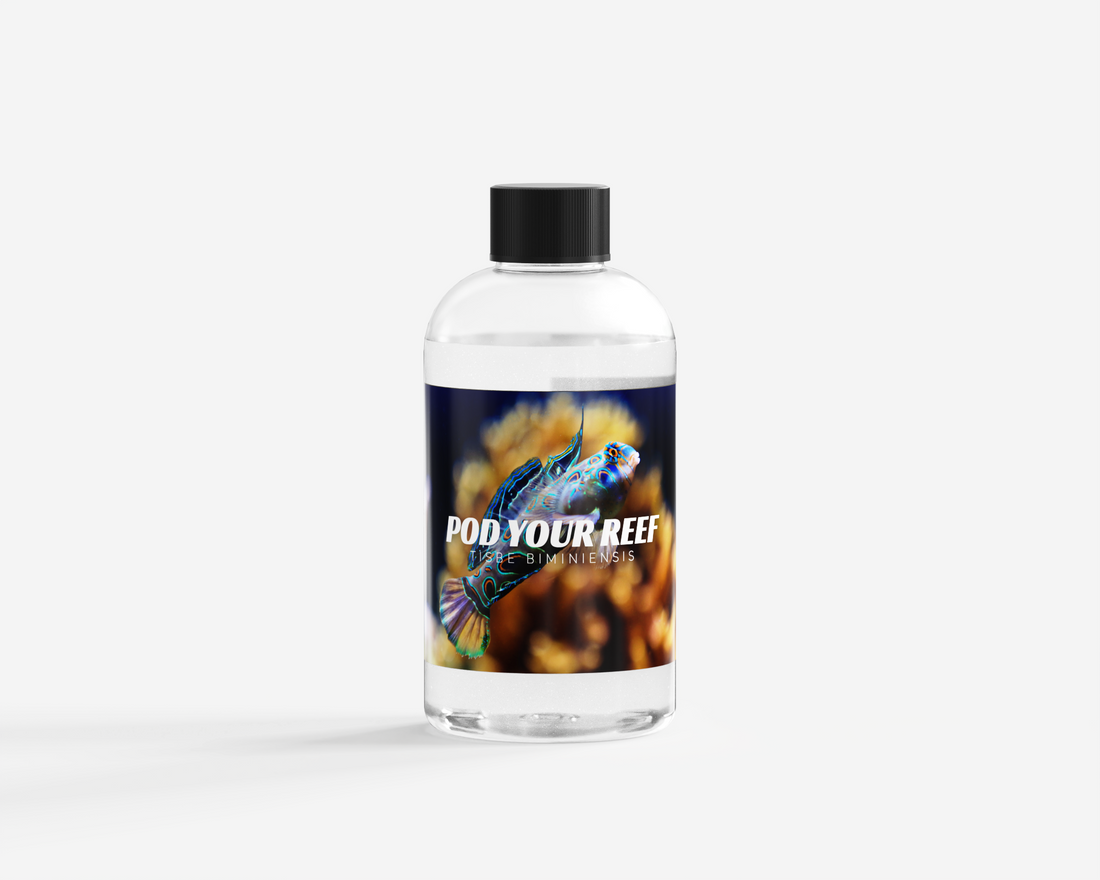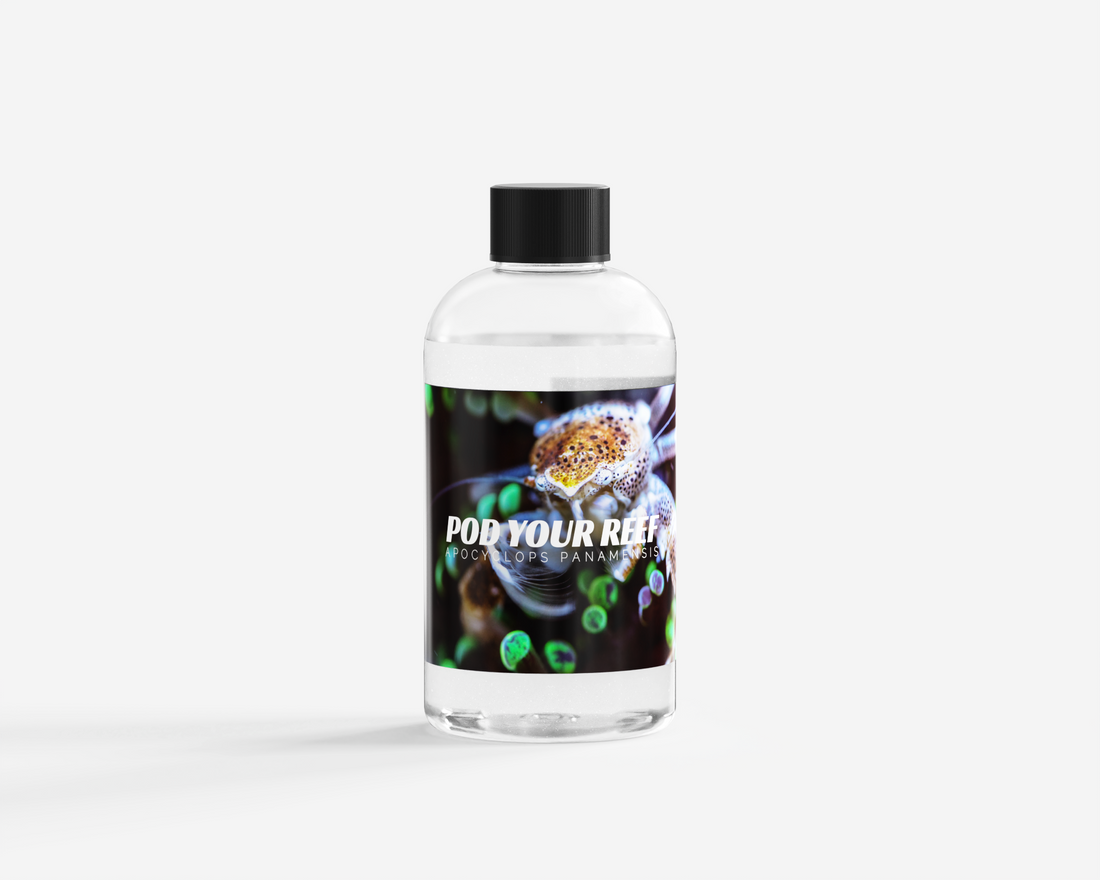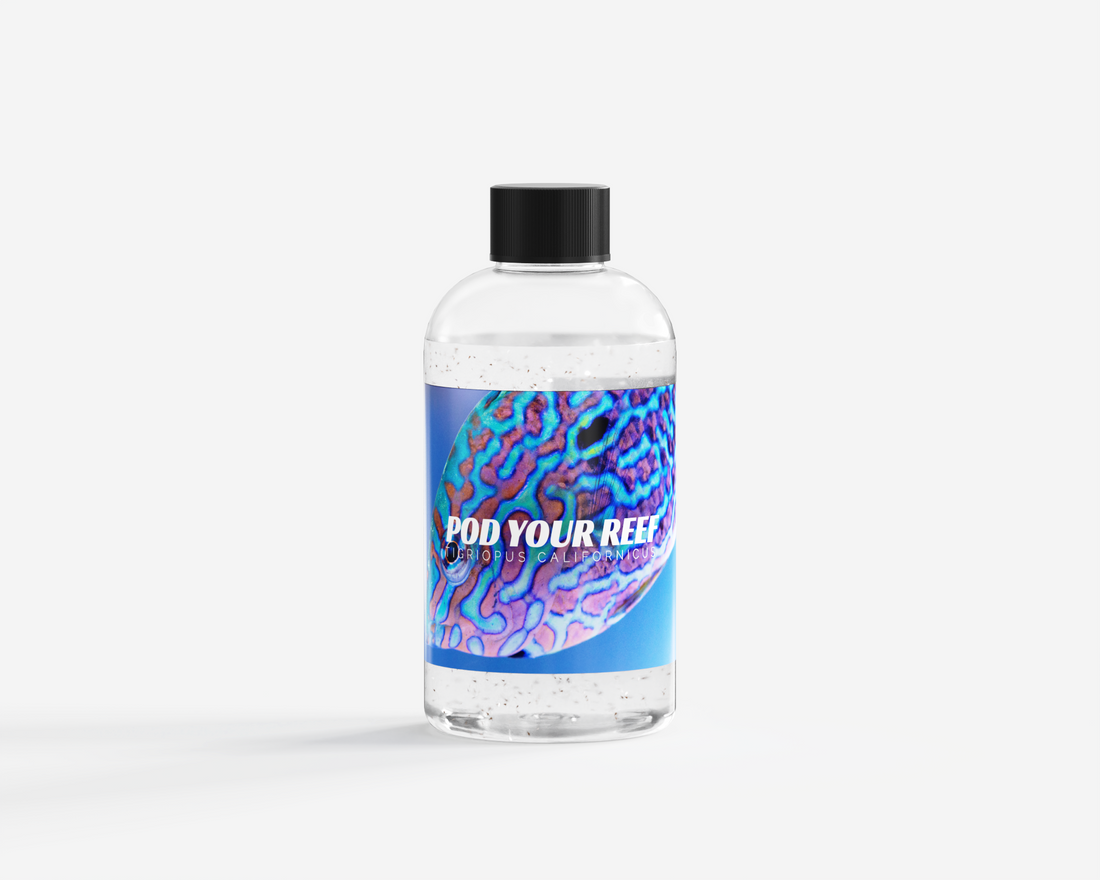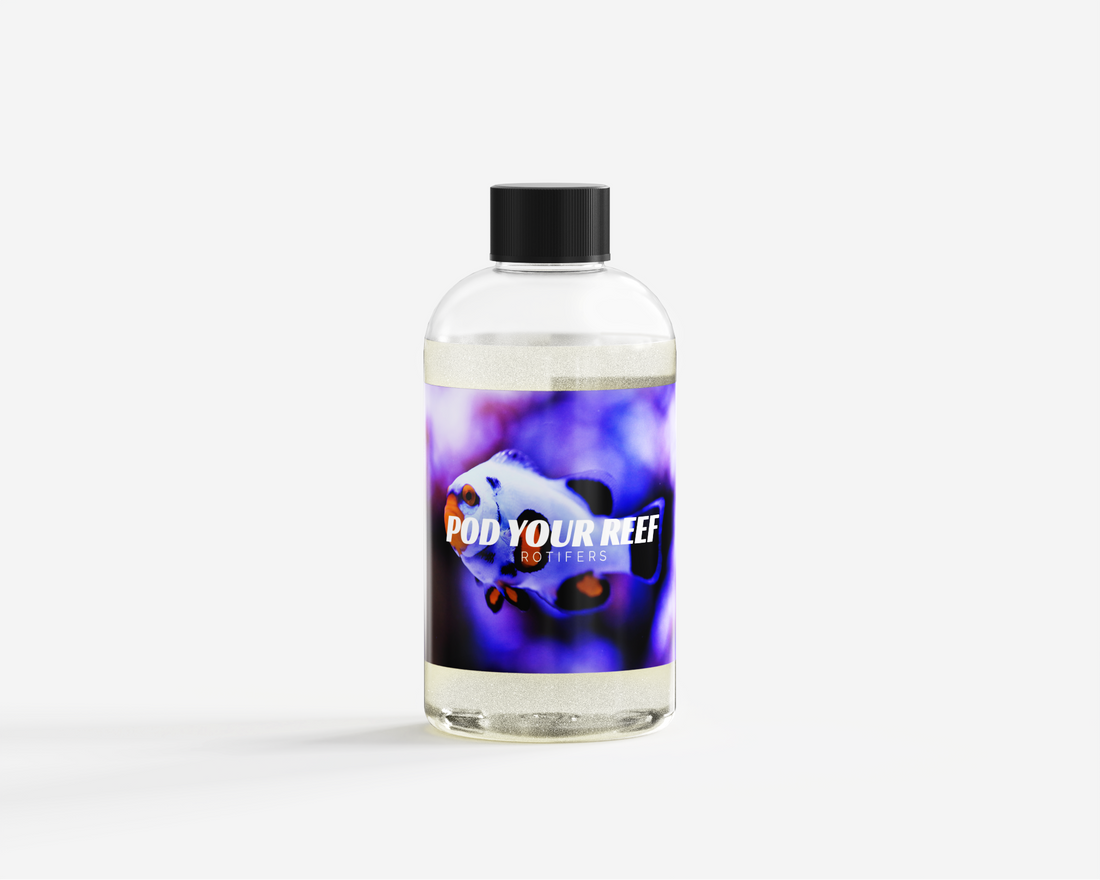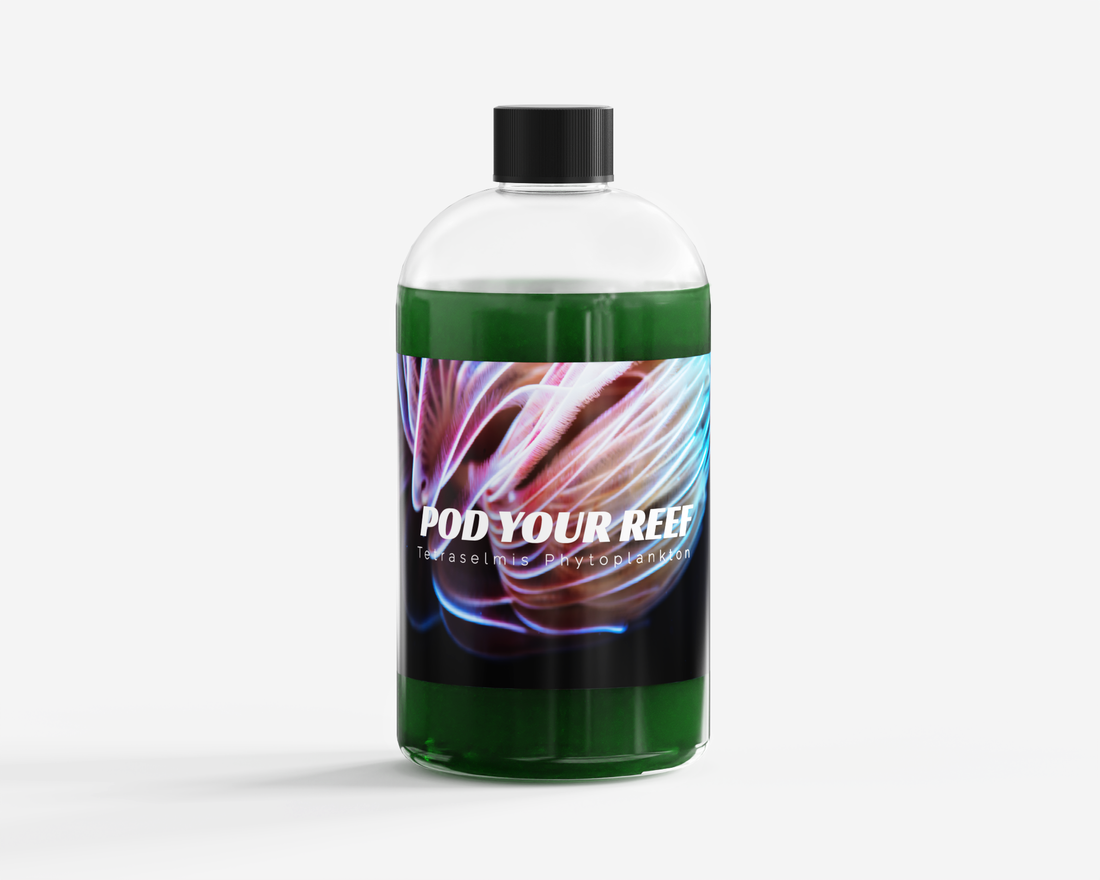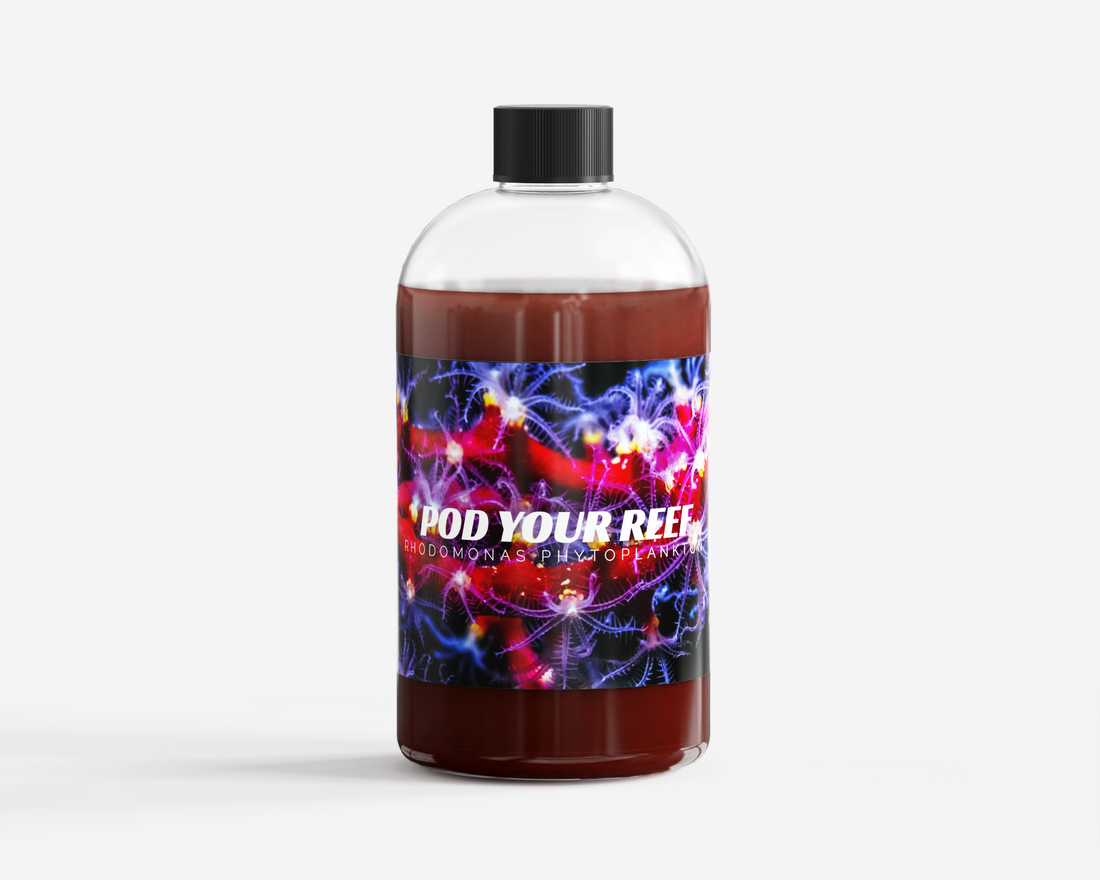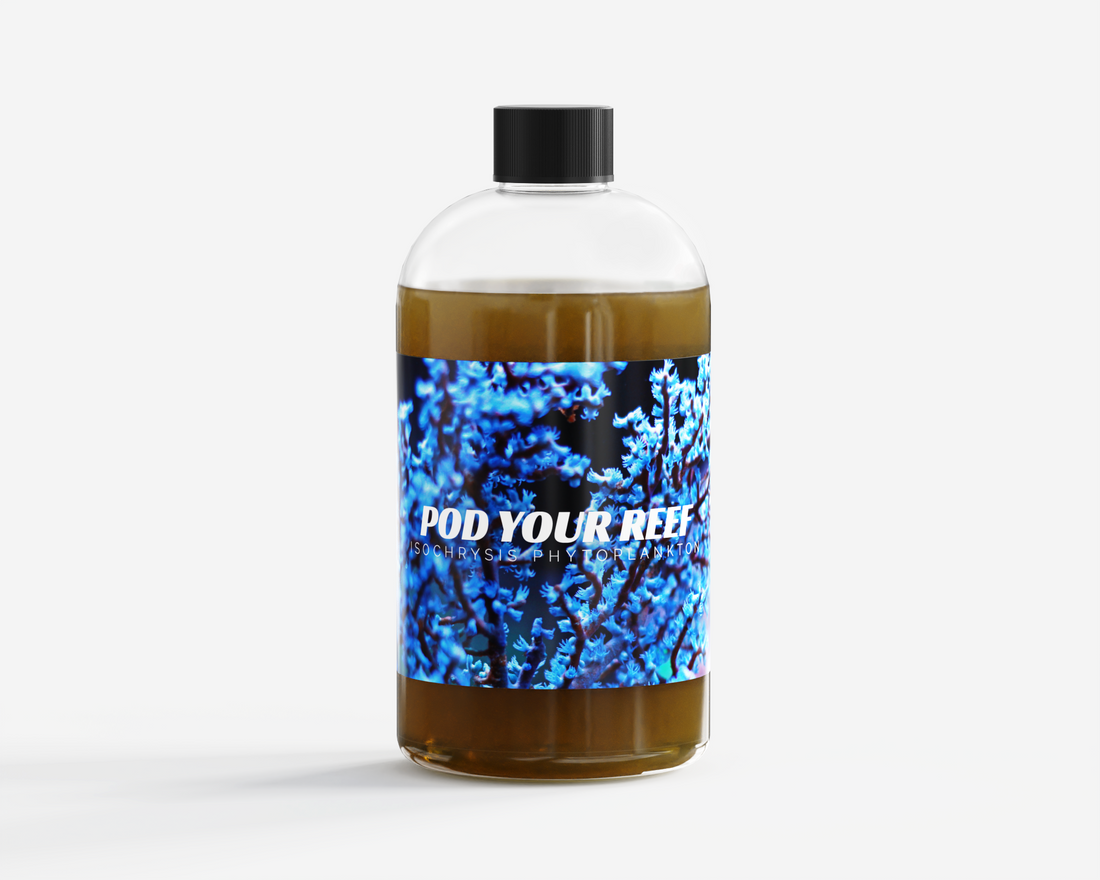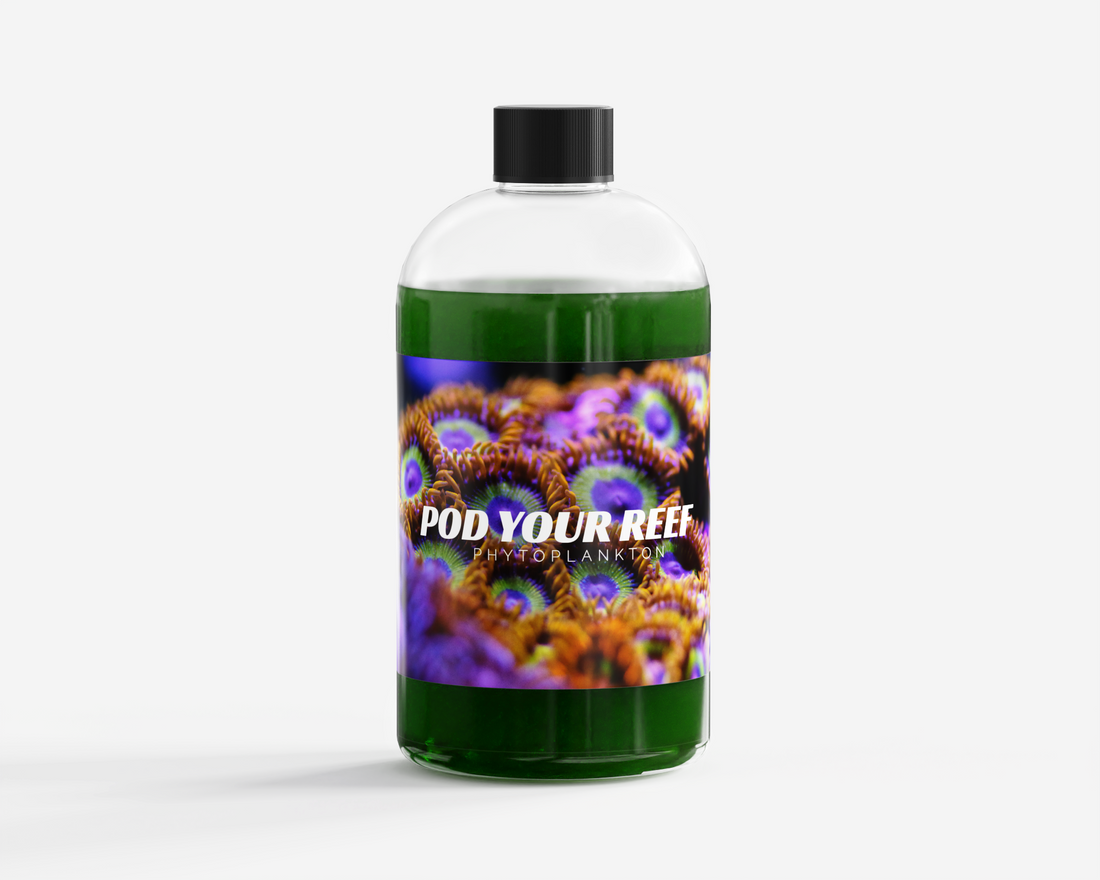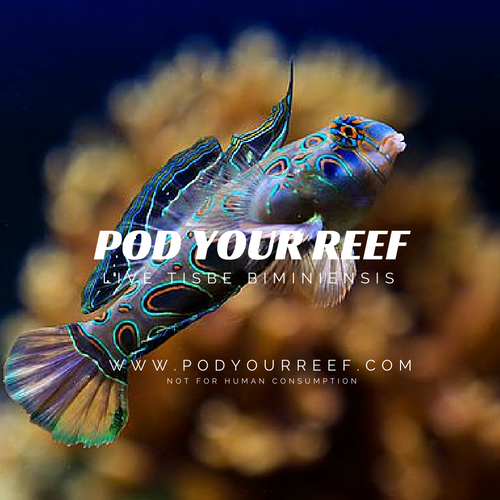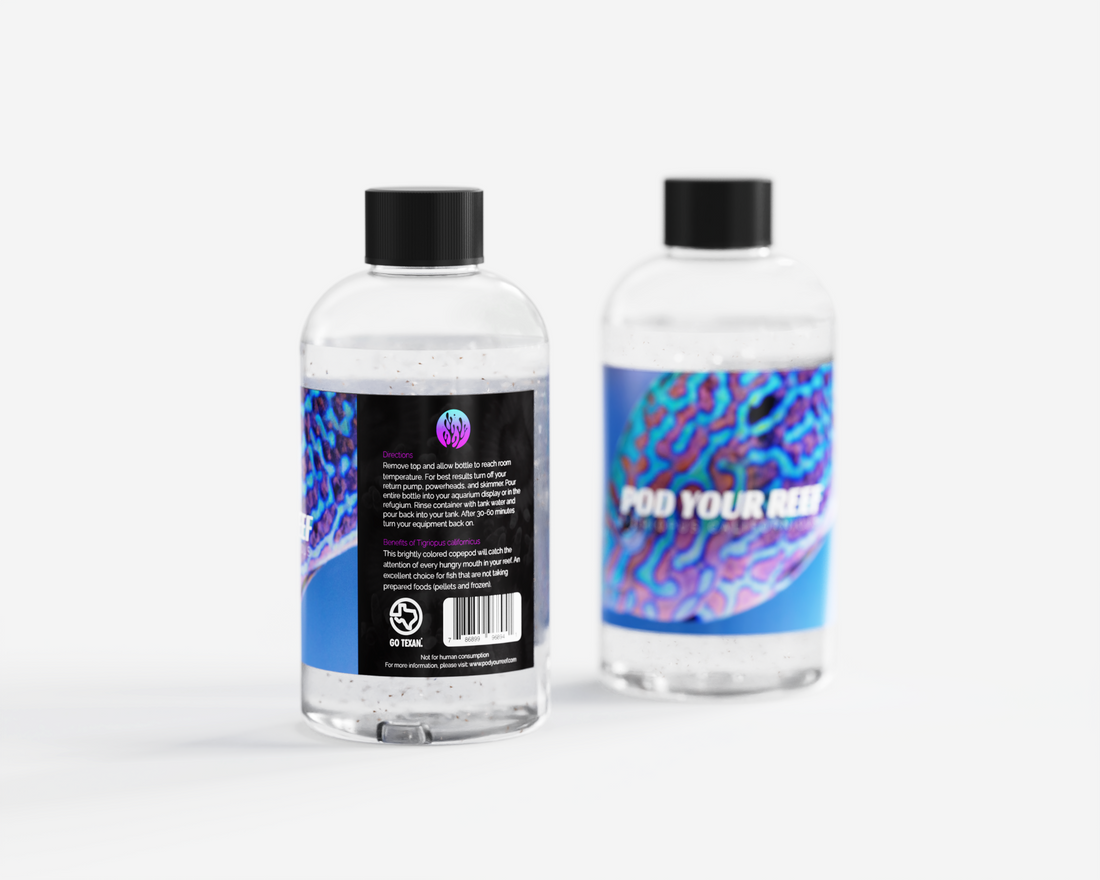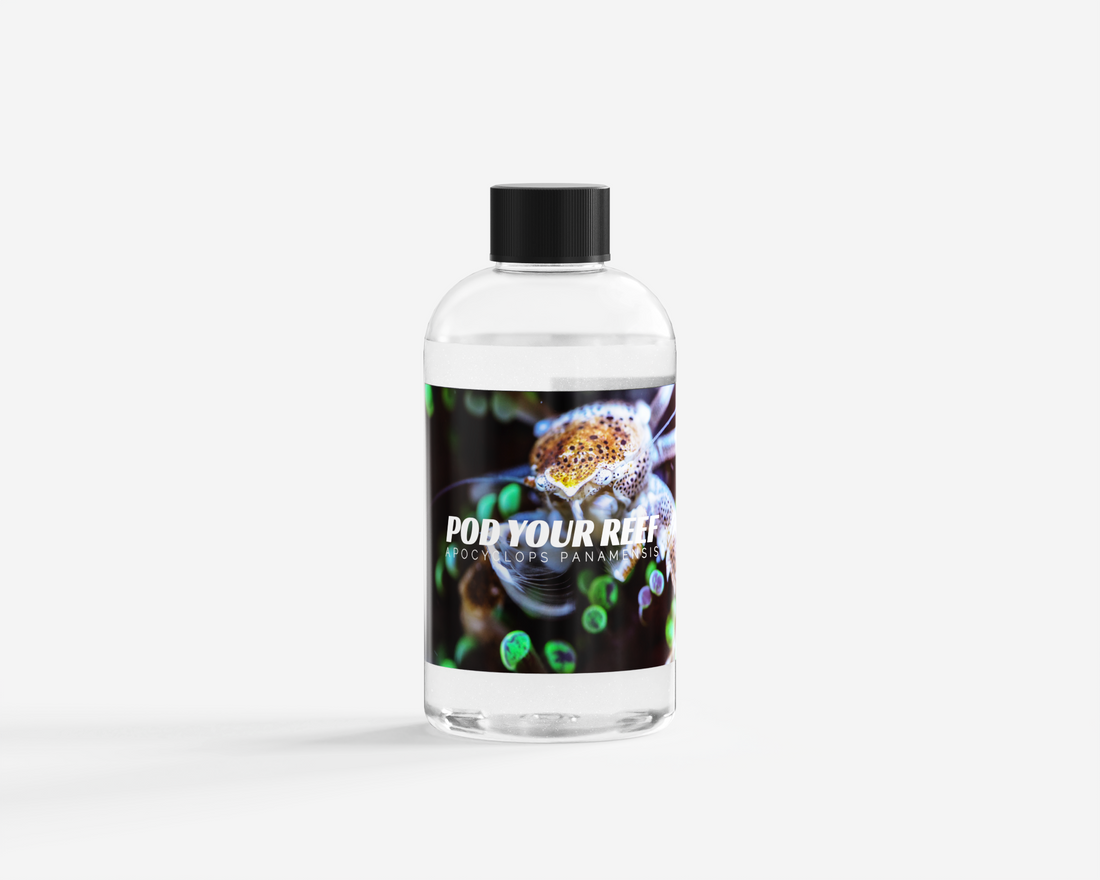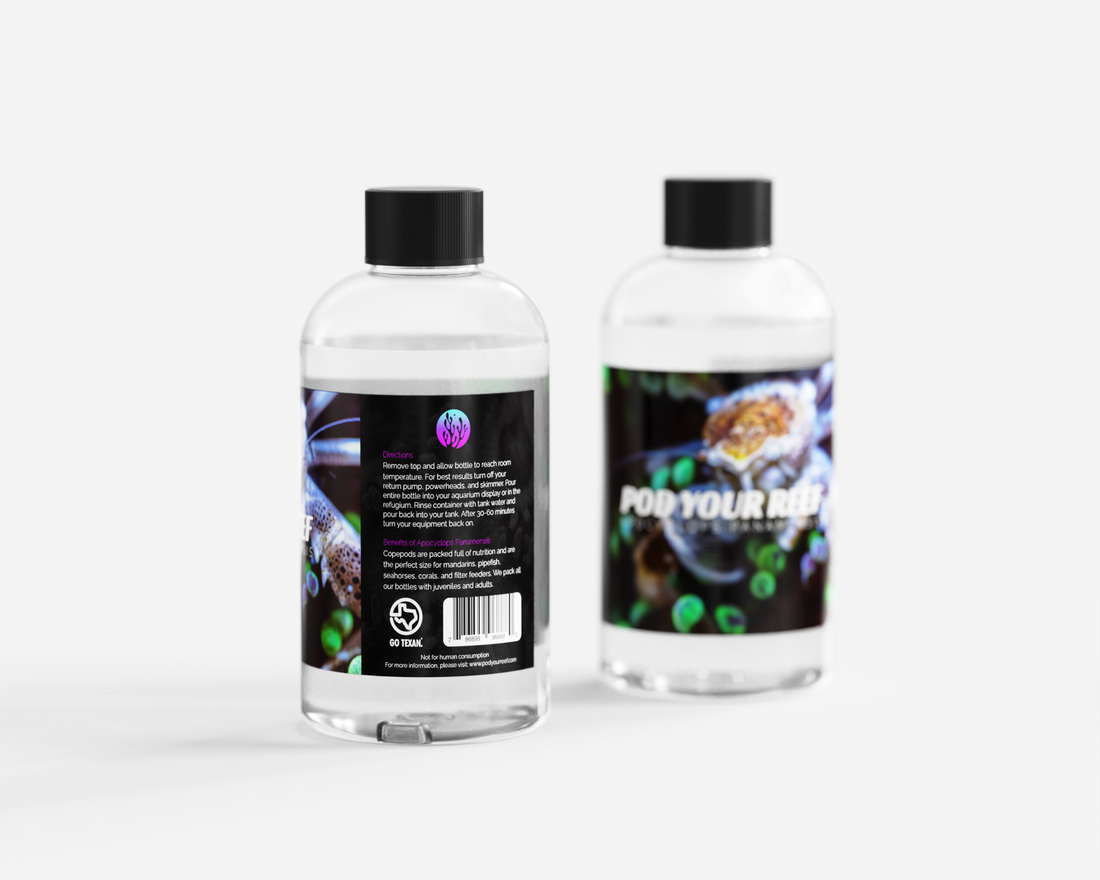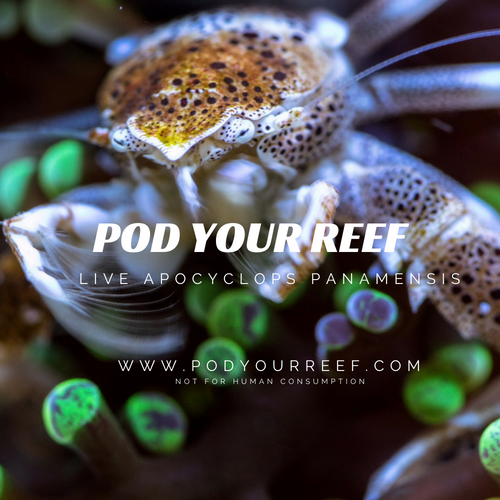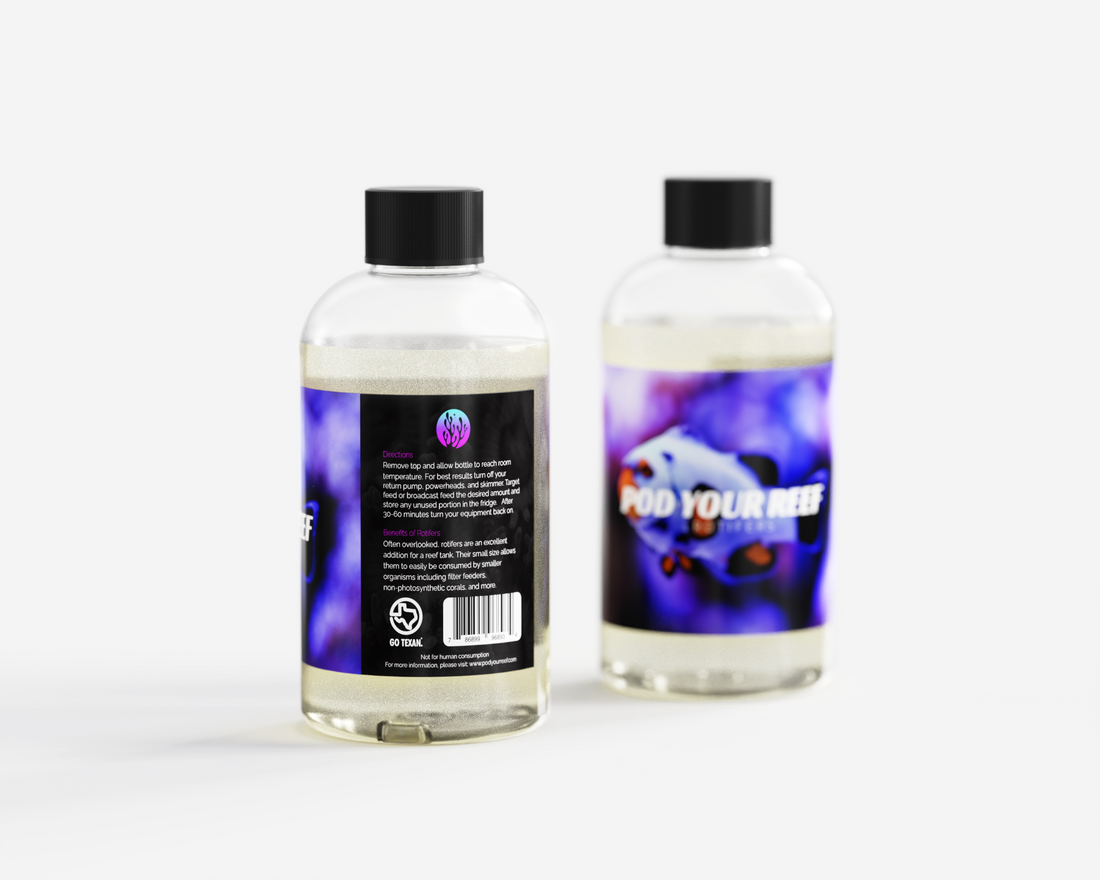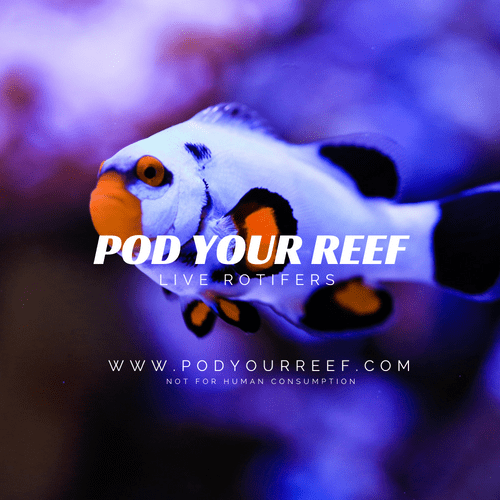
Care
Mastering NPS Corals: Feeding, Care & Coral Species for Non-Photosynthetic Reefs
Mastering NPS Corals: Feeding, Care & Coral Species for Non-Photosynthetic Reefs
Non-Photosynthetic (NPS) Corals: A Comprehensive Care Guide
Non-Photosynthetic (NPS) corals are a unique group of reef corals that do not rely on light for sustenance. Unlike typical photosynthetic corals, NPS corals lack symbiotic zooxanthellae algae in their tissues and thus **derive **no energy from photosynthesis. This fundamental difference means NPS corals must capture and consume food to meet 100% of their nutritional needs. In this guide, we’ll explore what sets NPS corals apart, their natural habits and diet, and detailed best practices for keeping these beautiful but demanding corals in a home aquarium. We’ll also highlight specific NPS species (Tubastraea, Dendronephthya, “Chili” coral, and NPS gorgonians) and provide practical care tips for each. Finally, we’ll recommend some foods, supplements, and equipment to help you succeed with your own NPS coral tank.
What Makes NPS Corals Different?
In nature, most reef-building corals live in symbiosis with microscopic algae (zooxanthellae) that live in their cells. The algae perform photosynthesis and share nutrients with the coral host. NPS corals, however, do not contain zooxanthellae – hence the term “azooxanthellate” often used to describe them. Without a solar-powered food source, NPS corals must actively feed on external foods to survive. This distinction leads to several important differences in biology and care:
- Energy Source: Photosynthetic corals get much of their energy from light (via algae), whereas NPS corals get all energy from capturing prey (plankton, particulate matter, etc.). They are true carnivores/filter-feeders, analogous to anemones or tubeworms in feeding behavior.
- Appearance: Many NPS corals are vividly colored (bright orange, red, yellow, purple) and often have large, fleshy polyps. They can look quite “odd” or exotic in shape and texture. Their brilliant colors are not from zooxanthellae (which often make corals brownish); instead, pigments may protect them from UV light or simply be inherent to their tissues.
- Behavior: NPS corals commonly expand their polyps after dark or when they sense food in the water. Since they don’t rely on daylight, many are nocturnal feeders. Hobbyists often observe sun corals or chili corals “waking up” and extending tentacles at dusk, a cue that it’s dinner time!
- Habitat Needs: Because they don’t need light, NPS corals naturally thrive in darker habitats on the reef (such as caves, ledges, and deep waters) where plankton is abundant. In an aquarium, this translates to different lighting and placement considerations (more on that below).
In short, an NPS coral tank is almost the inverse of a typical reef tank: low light but heavy feeding. Mastering the care of these corals means understanding their constant hunger and providing the right environment for them to feed and grow.
Natural Habitats and Feeding in the Wild
To successfully keep NPS corals, it helps to mimic their natural habitat and food availability. In the wild, NPS corals are often found in environments quite unlike the sunlit shallow reefs we imagine. Key characteristics of their natural setting include:
- Deep or Shaded Locations: Most NPS species reside in deeper reef zones, on steep walls, under overhangs, or inside caves where sunlight is minimal. With no benefit from light, they aren’t competing on bright reef flats; instead, they colonize darker niches where photosynthetic corals are scarce and food is plentiful. For example, brilliant orange Tubastraea cup corals often line cave ceilings, and colorful Dendronephthya soft corals form gardens on dimly lit reef slopes. These spots typically have nutrients and plankton coming in from surrounding waters.
- Strong Currents: NPS corals tend to live in areas with robust water flow (surge zones, currents funneling into caves, etc.). This constant flow delivers a steady supply of planktonic food and oxygen to the corals. In fact, one reason many cave-dwelling NPS corals hang upside-down on ledges is because currents rushing under the ledge push food particles right into their waiting polyps.
- “Plankton Soup” Environment: Compared to clear tropical shallows, deeper reef waters are often richer in plankton, detritus, and dissolved organic matter. Many NPS corals inhabit areas with high phytoplankton concentrations and abundant zooplankton. During the day, phytoplankton (microscopic algae) bloom in sunlit waters above; at night, this phytoplankton drifts down into deeper water. After dark, swarms of zooplankton (copepods, crustacean larvae, brine shrimp, etc.) rise from the depths to feed on the sinking phyto. NPS corals take full advantage of this nightly buffet. Studies have observed that NPS corals consume a huge quantity and variety of plankton: everything from tiny marine snow and bacteria up to zooplankton like brine shrimp nauplii. One report even noted a single sun coral polyp can capture up to 2,000 brine shrimp nauplii per day under natural conditions – an indication of just how food-rich their environment can be!
- Constant Food Availability: Unlike photosynthetic corals that get energy in spurts (when lights are on) and supplement by occasional prey capture, NPS corals are adapted to feed almost constantly. In the wild they have access to some form of food 24/7. During daylight, some NPS corals may grab passing plankton or feed on “reef snow” (aggregates of detritus and bacteria) sinking from above. At night, they feast on the peak zooplankton bloom. This continual food supply is why a few feedings per week in captivity is not enough for most NPS corals – they will survive only by thriving on near-continuous feeding.
Bottom line: NPS corals naturally reside in low-light, high-flow areas teeming with planktonic food. They are adapted to capture huge amounts of small prey around the clock. When designing an NPS aquarium, we must replicate these conditions as closely as possible – providing ample food and water movement, while not worrying much about intense lighting.

Sun corals (Tubastraea spp.) extend vibrant tentacles to snare plankton from the water. In the wild, these NPS corals live on dimly-lit cave walls and reef slopes where currents deliver a constant rain of food. Their lack of symbiotic algae means they must capture prey for energy.
Essential Aquarium Conditions for NPS Corals
Keeping NPS corals healthy in an aquarium poses a special challenge: how to feed heavily without polluting the tank. You’ll need to create an environment that meets their needs for low light and strong flow, and develop a feeding regimen that provides constant nutrition. At the same time, robust filtration and diligent maintenance are critical to manage water quality. Here we break down the key aspects of NPS coral care in captivity:
Tank Setup: Low Lighting and Strong Flow
Lighting: The good news is NPS corals do not require intense reef lighting – in fact, they prefer much dimmer conditions. In nature these corals often live in darkness, so bright lights in the tank are mostly for your viewing pleasure. Many aquarists with dedicated NPS tanks run only ambient room light or very low-intensity LEDs (sometimes just a blue moonlight glow to simulate deep water). High light can be problematic because it encourages nuisance algae on NPS corals (since the corals don’t have algae of their own, any algal growth is unwelcome). Placing NPS corals in shaded areas of your aquascape (beneath rock ledges or in caves you build) is a good strategy. This keeps them out of direct light and more closely mimics their natural homes. That said, it’s a myth that you must keep an NPS tank completely dark at all times – many people successfully keep sun corals or gorgonians in moderately lit mixed reefs by simply situating them under an overhang. The key is to avoid intense lighting on the coral’s tissue which could spur algae or cause the coral to stay retracted.
If you have a dedicated NPS display, you can use a very subdued lighting schedule (e.g. a short period of low-level lighting for viewing each day). Using an adjustable LED fixture (like a controllable Kessil light) allows you to dial the intensity way down. Remember, any photosynthetic organisms (like fish-harboring algae or other corals) will be limited by the low light, but the NPS corals will be perfectly happy. Pod Your Reef even offers a PAR meter rental service if you want to verify how dim your tank is – though in an NPS tank you might be measuring how low you can go rather than how high!
Flow: Water movement is absolutely crucial for NPS corals. In nature, they reside in high-flow zones and depend on currents to constantly bring them food. In your aquarium, aim for strong, randomized flow throughout the day and night. Powerful wavemaker pumps or a closed-loop system can achieve this. You’ll want to eliminate any “dead spots” where food can’t easily reach the coral. Alternating or turbulent flow is ideal – it helps deliver food particles to all sides of the coral and also carries away wastes. Many NPS keepers use multiple pumps (e.g., a gyre pump plus a propeller pump) to create complex flow patterns.
One consideration is not to “blast” the coral so hard that it can’t open its polyps. NPS corals can handle a lot of flow, but not so much that their polyps are flattened or unable to grab food. For instance, non-photosynthetic gorgonians thrive in swift currents, but if the flow is too direct and laminar, their delicate polyps might stay closed. A good rule of thumb is if you see the coral’s tentacles extended and gently swaying, the flow is sufficient; if the polyps never come out or the coral seems to shrink away, try adjusting the direction or intensity.
In practice, providing strong flow might mean running powerheads at higher settings or using wave action modes. Also consider periodic surge or pulsing flow which can simulate the tidal currents NPS corals often experience. When placing your corals, put them in areas of the tank that naturally get higher circulation (e.g., near pump outputs or in the path of a gyre). As an example, a Tubastraea sun coral could be positioned under a rock ledge that’s facing a pump output – replicating that cave ceiling scenario where water (and food) rush in continuously.
Summary: Keep lighting low and subtle, mainly for aesthetics. Provide vigorous, multi-directional flow at all times. This combination will help your NPS corals feel “at home” – comfortable opening up to feed, without being overrun by algae or detritus.
Feeding Strategies and Schedule
Feeding NPS corals is the single most important (and time-consuming) aspect of their care. Since these corals get all their nutrition from food you provide, you must feed them frequently and appropriately. A good mantra is: feed heavily, but feed smartly. Below, we’ll cover what to feed, how often, and techniques to ensure your NPS pets get enough to eat without crashing your water quality.
Diet and Food Types: NPS corals consume a wide variety of plankton and particulate foods. To keep them healthy, you should offer a mix of foods spanning different particle sizes, from tiny phytoplankton up to meaty zooplankton. This ensures each coral (whether it has minute filter-feeding polyps or large mouths) finds suitable nourishment. Common foods for NPS corals include:
- Live Plankton (Best Choice): Whenever possible, use live planktonic foods as they elicit strong feeding responses and are very nutritious. For instance, live rotifers are an excellent small zooplankton for filter-feeders – their small size and movement make them easy prey for NPS corals. Pod Your Reef offers live rotifer cultures ready to add to your tank. Likewise, live copepods (such as Tisbe or Apocyclops pods) are great for corals with larger polyps; they are rich in proteins and fatty acids and can even reproduce in your system, providing a continuous food source. Copepod nauplii (baby pods) and adults will be readily eaten by many NPS corals. Pod Your Reef’s Tisbe biminiensis pods, for example, are highly nutritious and also help consume detritus in the tank. You can dose pods and rotifers regularly to keep a standing population in the tank – some will get eaten immediately, and some may breed and sustain low-level availability between feedings.
- Phytoplankton: While NPS corals mostly require animal prey, dosing live phytoplankton (microalgae like Nannochloropsis, Tetraselmis, etc.) can be beneficial in an NPS system. Phytoplankton feeds the smallest filter feeders and rotifers, which in turn become food for corals. Many NPS corals will also consume some phytoplankton directly, though it’s not sufficient alone. Adding phyto (live or high-quality preserved) helps create a more natural “plankton soup.” Pod Your Reef sells live phytoplankton cultures (e.g. Nannochloropsis Phytoplankton) that you can dose daily to enrich the water column. This not only feeds certain NPS corals and inverts, but also keeps your pod/rotifer populations well-fed.
- Prepared Coral Foods: There are several excellent prepared foods designed for filter-feeding corals. These typically contain a blend of dried plankton, micro-particles, and often additives like vitamins or probiotics. One example is Coral Frenzy Powder, a popular all-in-one coral food which includes a mix of phytoplankton, zooplankton and beneficial probiotics. Such foods can be broadcast fed (mixed with tank water and dispersed) to simulate a plankton bloom. Reef Roids or similar powdered plankton foods also fall in this category. The advantage of prepared foods is convenience and long shelf-life – perfect for days you can’t culture live feeds. (As Coral Frenzy’s own description notes, it’s the “perfect alternative” when you don’t have time for live feeds). Keep a jar on hand for backup, but do try to feed live or frozen foods frequently as well for variety.
- Frozen Meaty Foods: Many NPS corals, especially those with larger polyps (e.g. sun corals, large-polyp gorgonians, certain anemones) appreciate meaty fare. This can include frozen (thawed) mysis shrimp, brine shrimp (adult or nauplii), Calanus copepods, krill, and finely chopped seafood (e.g. clam or mussel flesh). For instance, Tubastraea will readily accept mysis, brine, or small pieces of shrimp. Cyclopeeze (frozen tiny copepods) is a favorite for many NPS corals of all sizes and is often mentioned as a staple food. When feeding frozen foods, be sure to thaw and rinse if they’re oily, and target feed to avoid too much waste.
- “Reef Snow” and Miscellaneous: In the wild, NPS corals also consume marine snow (organic aggregates). In aquaria, products like Reef Snow or Reef Chili (a BRS food mix) attempt to replicate those fine particles. These can be used to supplement the diet, especially for the tiniest-polyped corals. Additionally, some aquarists dose amino acids or lipid supplements (like Prodibio Reef Booster) which provide dissolved nutrients that feed microfauna and enhance coral nutrition. Reef Booster, for example, is a nutrient supplement that feeds both corals and the anaerobic bacteria that help reduce nitrates – a useful combo effect in NPS systems.
Feeding Frequency: Given their high metabolic needs, NPS corals should be fed daily – and ideally, multiple times per day. A good starting point is to ensure at least one substantial feeding session every day (where you really saturate the water with plankton food or target feed each coral well). However, most NPS enthusiasts find 2–3 feedings per day yields much better results, especially for very demanding species. Remember, in the wild they feed constantly, so the more frequent your feedings (within reason), the more you mimic natural conditions. Small, frequent feedings are better than one huge dump of food. For instance, you might broadcast feed rotifers/phyto in the morning, spot-feed some meaty food at midday, and broadcast a mix of particle foods in the evening.
Some advanced techniques include using an automatic dosing pump or drip system to add plankton continuously. Hobbyists have rigged refrigerated containers to slowly drip feed phyto and rotifers overnight, ensuring corals have access to food across many hours. While not everyone will go to that extreme, it underscores the point: consistency and frequency are key. A coral like a carnation (Dendronephthya) will slowly starve if it only gets fed a few times a week – it really needs near-constant feeding opportunities. In general, observe your corals’ reaction: if they open up eagerly at a certain time or right after a feeding, that’s a sign to keep that schedule. If a coral remains closed often, you may need to adjust timing or type of food.
Feeding Techniques: There are two primary ways to feed NPS corals:
- Broadcast Feeding: This means dispersing food into the water column so that it flows around the tank and corals can grab it. Broadcast feeding is essential for corals with many small polyps (e.g. chili coral, carnation coral, many gorgonians) that are filter feeders. To broadcast feed, turn off or slow your return pump (to keep food from immediately going to the sump) but keep powerheads on to circulate food. Then squirt your prepared plankton food mix into the high-flow areas. The goal is to create a “soup” of food drifting around the tank for 10-30 minutes. During this time, you should see NPS corals extend and capture particles. After the feeding period, turn the return pump back on so your filters can start cleaning the water again. Tip: It helps to pre-mix dry foods or frozen foods in tank water before adding, to help them spread. For live foods like rotifers, you can just pour them in as is (they will swim). Broadcast feeding ensures even the sessile inverts and tiny polyps get a crack at food they otherwise couldn’t reach.
- Target Feeding: Many NPS corals benefit from direct feeding using a turkey baster, pipette, or specialized coral feeder tube. Target feeding is especially useful for larger-polyped NPS corals (like sun corals, tube anemones, large sea fans) that can ingest bigger items. To target feed, first turn off all pumps so the water is still. Using a baster loaded with food, gently squirt food onto the coral’s polyps. For a sun coral, for example, you would squirt a cloud of mysis/brine around each polyp to ensure each gets a piece. The polyps will close up on the food and start digesting. Leave pumps off for ~10 minutes to let them eat without the food blowing away, then resume flow. Target feeding is labor-intensive (especially if you have to feed every polyp of a large sun coral colony!), but it guarantees those corals get their share. Some hobbyists place a cut-off plastic bottle or a feeding dome over the coral while target feeding to keep food concentrated around it.
In practice, you’ll likely use both methods. For instance, you might broadcast feed fine particles nightly for your filter feeders, and a few times a week target feed your sun coral some meaty treats to ensure its calorie needs are met. Consistency is critical – try to stick to a routine so the corals “learn” when to open. Many NPS corals can be trained by feeding at the same time each day. They will begin to extend polyps in anticipation (some even learn to open when the tank’s feeding pump turns off, as they associate still water with dinner time!).
Product Recommendations – Foods: To implement your feeding plan, here are some Pod Your Reef products that can help make feeding NPS corals easier and more effective:
- Live Rotifers: A staple food for NPS corals with small polyps. Pod Your Reef’s live rotifer culture provides a dense population of rotifers ready to feed filter feeders. Rotifers can be added daily; any uneaten will graze on microalgae in your tank until consumed, adding to your clean-up crew as well.
- Live Copepods: Copepods of various sizes (e.g., Tisbe, Apocyclops, Tigriopus) offer nutritious live prey. Tisbe pods in particular are great for both fish (like mandarins) and NPS corals. Pod Your Reef sells Tisbe Biminiensis Copepods which are hardy and reproduce quickly. Adding a bottle every so often or maintaining a refugium culture will ensure a continuous supply of live pods in the system.
- Live Phytoplankton: Products like Nannochloropsis or Tetraselmis phytoplankton from Pod Your Reef can be dosed to create a plankton-rich environment. As mentioned, phyto feeds the lower end of the food chain and can indirectly feed your NPS corals. Dosing phyto also helps maintain populations of rotifers and pods in the tank. Aim to add a few ounces of live phyto every day or two (preferably at night when many corals feed).
- Coral Frenzy Powder Food: For convenient daily feeding, Coral Frenzy is a highly regarded option. It contains particles from 50–300 microns, covering a range of sizes, and includes both plant and animal ingredients plus probiotics. The probiotics help maintain water clarity by aiding in breakdown of waste food. You can mix Coral Frenzy powder with tank water and broadcast it – polyps usually show a strong feeding response. (Don’t feel too guilty if you rely on prepared foods on busy days – as Coral Frenzy jokingly says, you shouldn’t be ashamed for not always feeding live.)
- Frozen Plankton Foods: Look for frozen preparations like cyclops, baby brine shrimp, and mysis. These can often be bought from aquarium stores. Thaw them in a cup of tank water, then either broadcast or target feed as needed. Frozen foods are a convenient way to provide larger particles. Just avoid introducing excess frozen food liquids (rinsing can help) to minimize phosphate introduction.
- Reef Booster (Prodibio): This is a supplement rather than a direct food, but it’s worth mentioning. Prodibio Reef Booster comes in small vials and contains a mix of nutrients (including Omega-3 fatty acids) designed for filter feeders. Dosing Reef Booster every 2 weeks or so can enhance your feeding regimen by nourishing microfauna and even helping reduce nitrates/phosphates via feeding beneficial bacteria. It’s like a vitamin shot for your reef ecosystem. At around $6 per vial, it’s an easy addition to try if you’re striving for peak coral health.
By offering a varied diet and sticking to a frequent schedule, you’ll meet the substantial dietary demands of NPS corals. Remember, a well-fed NPS coral will exhibit fuller flesh, open regularly, and show growth; a poorly fed one will gradually shrink or stay closed. When in doubt, feed a little more, and monitor water quality (we’ll talk about managing nutrients next).
Filtration and Nutrient Management
All that feeding we just discussed has a flip side: lots of food = lots of waste in the water. If you simply dump copious food into a closed aquarium, water quality will deteriorate – ammonia, nitrate, and phosphate will spike, leading to algae blooms and unhealthy conditions. Thus, a critical part of NPS coral keeping is implementing robust filtration and nutrient export to handle the extra load. The goal is to feed generously and maintain excellent water quality. Here are strategies to achieve that balance:
- Protein Skimmer: A high-performance protein skimmer is practically mandatory for an NPS tank. Skimmers foam out dissolved organic compounds (DOCs) before they break down into nitrates/phosphates. Given the heavy feeding in an NPS system, your skimmer will be working overtime – you want one rated for a larger volume than your tank (oversize it). The skimmer will pull out uneaten food particles and coral excretions, helping keep water clear and nutrient levels lower. Look for models known for handling heavy bioloads. For example, the Dalua Great White Skimmer series offers powerful skimming capacity (models GW-7 through GW-30 for various tank sizes). A good skimmer will also keep oxygen levels high and even improve ORP (oxidation-reduction potential) in the tank. Tip: Run the skimmer wet (i.e., a more liquid skim) during periods of heavy feeding to yank out as much waste as possible. Expect to empty the skimmer cup often – that’s normal in an NPS setup.
- Mechanical Filtration: Using filter socks or fine filter pads in your sump can help catch larger food particles before they decay. For instance, if you broadcast feed heavily at night, consider putting on a 100-micron filter sock and then removing it a few hours after feeding to discard the captured debris. Important: Mechanical filters must be changed/cleaned frequently (daily or every couple of days) or they will become nitrate factories themselves. An alternative is to use an automatic roll filter (like a Clarisea) that continuously removes detritus. Some NPS keepers forego filter socks and let the skimmer and refugium do the work, to avoid the maintenance – it depends on your system’s needs.
- Refugium with Macroalgae: A refugium is extremely useful in NPS systems for nutrient export and biodiversity. By growing fast-growing macroalgae, you can uptake nitrates and phosphates naturally. The most popular macro for this purpose is Chaetomorpha algae. Chaeto is a hardy filamentous algae that, under strong light in a refugium, will absorb excess nutrients out of the water as it grows. This directly competes with pest algae in the display and helps keep nitrate/phosphate in check. Pod Your Reef offers pest-free Chaeto that often comes with beneficial pods included. As the Chaeto ball in your sump doubles in size, you trim and remove some – thereby exporting the nutrients it locked into its biomass. An added benefit: a chaeto refugium becomes a breeding ground for copepods and other microfauna (it provides a safe haven for zooplankton to reproduce), essentially serving as a live food generator for your NPS corals! For effective use, provide your refugium with strong lighting (a dedicated refugium grow light like the Kessil H160 or an LED plant light) and maintain good flow through the algae. Harvest the algae routinely. As a guideline, many aim to keep nitrate around 5 ppm and phosphate ~0.01-0.05 ppm; your refugium can be tuned (via light duration) to help hit those targets.
- Deep Sand Bed or Media for Denitrification: Some NPS aquarists implement a deep sand bed (DSB) in a remote refugium or use special bio-media to foster anaerobic bacteria that convert nitrate into nitrogen gas. Products like MarinePure blocks or plates can be placed in the sump to dramatically increase biological filtration capacity. MarinePure’s ultra-porous ceramic structure hosts abundant nitrifying and denitrifying bacteria, helping break down ammonia and nitrite, and potentially reducing nitrate as well. It’s an easy way to boost your biofilter to handle the heavy bioload. Just make sure to keep the blocks in an area of steady flow so they get oxygen on the surface and develop low-oxygen zones deeper inside for nitrate removal. Over time, this can stabilize nitrates at lower levels.
- Chemical Filtration: If phosphate becomes an issue (e.g., above ~0.1 ppm fueling algae growth), consider using GFO (granular ferric oxide) in a reactor to pull out phosphates. Carbon dosing (vinegar/vodka or commercial biopellets) is another route to bind up nitrate/phosphate via bacterial growth that the skimmer then removes – but be cautious and research before starting carbon dosing, as it requires careful tuning. Activated carbon can be run to remove organics and keep water odor-free, especially given the large amount of food added. Just replace it regularly (monthly) to ensure continued effectiveness.
- Bacterial Additives: Adding beneficial bacteria can help consume excess nutrients and break down detritus. For example, Dr. Tim’s Waste-Away is a product containing waste-eating bacteria. Pod Your Reef offers Waste-Away in both liquid and time-release gel forms. The Waste-Away gels can be placed in the sump to continuously release bacteria that dissolve sludge and hidden wastes, boosting your biological filtration. These bacteria also increase skimmer production and raise ORP by digesting organics. Using such additives periodically can reduce accumulation of leftover food in hard-to-reach spots (like inside rocks), essentially giving your tank a cleanup crew at the microbial level. Just follow instructions – often these are used weekly or biweekly. Similarly, Prodibio BioDigest (bacteria) and Bioptim (bacteria food) could be used to enhance denitrification in tandem with Reef Booster feedings.
- Water Changes: Even with great filtration, an NPS tank will likely require frequent water changes to prevent nutrient creep and replenish elements. Plan for larger or more frequent changes than a typical reef. For instance, doing 10-20% weekly water changes will export accumulated nitrates/phosphates and reset trace elements that may get depleted or unbalanced (heavy skimming can strip some trace elements, as can the biomass export). Monitoring nutrient levels will guide you – if nitrates start climbing above, say, 15-20 ppm, upping your water change schedule is prudent. Many successful NPS keepers do small daily water changes (e.g. 1% a day via an automatic change system) which helps maintain stability.
Tip: It’s a balancing act – you want some nutrients (NPS corals don’t like sterile water either), but not so much that algae or cyanobacteria overrun the tank. In practice, having a bit of measurable nitrate (2-10 ppm) and phosphate (~0.01-0.1 ppm) is fine, even beneficial, for an NPS system. The key is avoid extremes: don’t let nutrients hit zero (corals starve) and don’t let them skyrocket (corals stress and algae blooms). With robust filtration and mindful feeding, you can ride that middle ground. Test your water regularly for nitrate and phosphate, especially as you scale up feeding. If you see trends upward, respond with adjustments in feeding quantity or filtration.
Finally, good husbandry is crucial: siphon out detritus from the sump and display often (decaying uneaten food can accumulate in rock crevices), clean your skimmer and pumps so they work efficiently, and prune your macroalgae/refugium routinely. Running an NPS tank can be heavy on maintenance, but it’s necessary to keep the environment healthy for these corals. A Reef Reef Food Selection Chart can help plan a feeding regimen that your filtration can handle. And if you want to be extra sure about water chemistry, you can use ICP test kits (like Triton test) to monitor any chemical imbalances over time due to unusual feeding inputs.
Maintaining Stable Water Parameters
Beyond filtration, you should aim to maintain overall stable water parameters just as you would in any reef tank. NPS corals may not need light, but they do share similar preferences for temperature, salinity, and basic water chemistry:
- Temperature: Most tropical NPS corals do well in standard reef temperatures of about 24–26°C (75–79°F). Because many come from slightly deeper or shaded environments, they are often comfortable in the lower end of that range. Keeping the tank around 24–25°C (~76°F) is a safe bet. There is anecdotal advice that some non-photosynthetic gorgonians and deepwater soft corals prefer it a bit cooler (73–75°F), so if you keep primarily NPS species, you could target ~74°F to hedge on the cool side. The main thing is avoid big temp swings. Use a reliable heater (and possibly a chiller if your tank runs hot) to keep temperature stable within 1–2 degrees. Sudden drops or spikes (due to room temp or equipment failure) can stress these corals, just as it would any reef inhabitant.
- Salinity: Aim for natural seawater salinity around 35 ppt (specific gravity ~1.025). Consistency is more important than the exact number (anywhere 1.024–1.026 is fine). With heavy evaporation from strong flow and skimmers, use an auto top-off to keep salinity stable. When performing water changes (which you’ll likely do frequently), match the salinity and temperature of the new water to the display to avoid shock.
- pH: A well-aerated, nutrient-managed NPS tank typically has a pH in the normal range (~7.9–8.3). Heavy feeding and decomposition can sometimes depress pH (as CO₂ accumulates). Ensure good gas exchange (the skimmer helps with this) to keep pH up. If your tank tends to run low pH due to a closed house, consider running the skimmer air intake to outside air or using a CO₂ scrubber. However, do not chase pH with chemicals – focus on overall gas balance. Nighttime pH might dip a bit (since photosynthesis isn’t happening to consume CO₂), so it’s common for NPS tanks to have a smaller pH swing or a slightly lower average pH than a lit reef tank. Generally, as long as you’re within 7.8–8.3 and stable, and your alkalinity is solid, the corals will be fine.
- Alkalinity, Calcium, Magnesium: If you have any stony NPS corals (e.g. Tubastraea or Balanophyllia cup corals, or certain hydrocorals), they will consume calcium and carbonate to build their skeletons. Even soft NPS corals appreciate stable water chemistry. Keep alkalinity in the range of 7–9 dKH, calcium ~420 ppm, and magnesium ~1300 ppm. Regular water changes often replenish these if consumption is low. In an NPS-only tank with mostly soft corals, you may not need much dosing. But in a mixed reef or if you have large NPS stony colonies, monitor these levels and dose 2-part or use a calcium reactor as needed. A stable alkalinity is particularly crucial to avoid swings that could harm sensitive inverts. The MarinePure media mentioned earlier can help buffer some pH/alk swings by facilitating the complete nitrogen cycle (reducing the acidifying nitrate), but you should still test and supplement Ca/Alk if levels drop from baseline.
- Trace Elements: NPS corals don’t have any special trace element needs beyond what other corals and inverts need. Heavy export via skimming and algae might over time deplete things like iodine, iron (especially if you’re harvesting a lot of macroalgae), etc. Consider periodic dosing of trace element supplements or simply rely on your water changes to refresh these. If you use an ICP test service (like Triton ICP) every few months, you can spot if any minor element is running low or high and adjust accordingly.
- Preventing Pests and Algae: Keep typical pests in check – for example, algae growth on NPS corals can be deadly since they cannot photosynthesize or “clean” themselves. Maintaining lower light and low nutrients as described will deter algae. Snails and cleanup crew that work in the dark (like nocturnal urchins or certain crabs) can help graze any algae that tries to grow on coral skeletons or rocks near NPS corals. Some aquarists gently baste their NPS corals with a pipette periodically to dislodge any debris or film that might settle on them (especially if a coral is retracted during the day, detritus can settle on it – a quick puff of water can clean it off).
In summary, treat water parameters as you would for a sensitive reef tank: stable and within natural seawater ranges, with a bit of nutrients allowed. By achieving a balance of heavy feeding and heavy nutrient export, you provide nutrient-rich food inputs but keep the residual nutrient levels modest. This is the crux of NPS coral care – and it can absolutely be done with careful planning and consistent maintenance. Many modern reef keepers are rising to this challenge and enjoying success with these once “impossible” corals.
Species Spotlights: Notable NPS Corals and Their Care
Now let’s look at some specific NPS coral species popular with hobbyists. Each has its own quirks and care requirements. We’ll cover the ones mentioned in the prompt and a few notes on each:
Sun Corals (Tubastraea spp.)
Overview: Sun corals (genus Tubastraea) are perhaps the most well-known NPS corals in the hobby. They are large-polyp stony corals (LPS) belonging to the family Dendrophylliidae. Sun corals form clusters of cup-like calcareous skeletons with plump polyps that come out of each cup. Common varieties include Tubastraea faulkneri (orange sun coral), T. coccinea (orange with smaller polyps), and T. micranthus (black sun coral, which has a dark skeleton and neon green polyps). When open, a sun coral colony resembles a bouquet of bright orange/yellow “sunflowers” – hence the name.
Feeding: Tubastraea have fairly large mouths and thick tentacles, allowing them to eat relatively large meaty foods. They love live food and zooplankton – feeder brine shrimp, mysis shrimp, small pieces of clam or squid, etc. are readily accepted. They will also capture smaller particles like cyclopeeze and copepods if available. In an aquarium, each polyp should ideally be target fed a few times a week with nutrient-dense foods (mysis soaked in vitamins, for example). Sun corals extend tentacles mostly at night, but you can train them to open during the day by offering food consistently around the same time. Often, just adding some food to the water (e.g. squirting a bit of brine shrimp juice) will cause the polyps to “smell” food and come out. Once open, you can target feed each head. Their polyps can ingest surprisingly large items (a big polyp can swallow a whole mysis shrimp). They are not picky eaters – Tubastraea will take almost any kind of meaty fare when hungry. A healthy, well-fed sun coral grows new buds/polyp heads over time, eventually covering its rock with more cups.
Placement & Lighting: In the wild, sun corals are found under ledges and in caves, so they appreciate shaded areas in the tank. They do not need or want bright light – algae can overgrow their skeleton if lit intensely. Place them in a low-light, high-flow spot. Many hobbyists wedge them in cave-like spots in rockwork. You can orient them vertically or upside-down on a ledge, similar to their natural position, so that when they open, gravity doesn’t let heavy foods fall out of their polyps easily (this is a neat trick – feeding upside-down sun corals in a cave can actually make it easier for them to catch food!). Ensure moderate to strong flow to carry food to them, but not so much that it rips food away mid-feeding.
Care Level: Sun corals are considered one of the easier NPS corals – often recommended as a “first NPS” for reefers. They don’t require constant feeding like some soft NPS do, and they are relatively hardy and tolerant of less-than-perfect water quality (within reason). The main challenge is regular feeding of each polyp. If you neglect feeding, they will languish. But with diligence, many aquarists keep sun corals thriving even in mixed reefs. They don’t sting other corals, but give them space so that when their tentacles extend (which can be quite long at night) they aren’t bumping into neighbors.
Special Notes: Handle sun coral colonies carefully – their polyps are sensitive to physical damage. The tissue can be torn if rough-handled, leading to infection. When moving them, try not to touch the soft tissue; handle by the hard skeleton if possible. Also, Tubastraea micranthus (black sun coral) is notably more difficult than the orange species – it tends to have very high feeding needs and lower tolerance for nutrient buildup, so attempt that one only if you have had success with the orange variety. As a final note, Tubastraea are non-photosynthetic but invasive in some regions (they’ve spread in the Atlantic); never release them into the wild.
Carnation Tree Corals (Dendronephthya spp. and Scleronephthya spp.)
Overview: Often called carnation corals, tree corals, or cauliflower soft corals, Dendronephthya are among the most beautiful – and challenging – NPS corals. They are soft corals that grow in brightly colored tree-like forms with branches covered in tiny polyps. Colors range from hot pink to red, orange, purple, even multicolored with yellow or white polyps. These corals lack any rigid skeleton, but they have internal calcium spicules for some support. Carnation corals are found in strong flow areas of Indo-Pacific reefs, often hanging on walls or caves. They are truly eye-catching, but have a reputation as “expert only” corals because historically most waste away in captivity.
Feeding: Dendronephthya have very small polyps – think of tiny flower petals – which indicate they require extremely fine food particles. In the wild, studies suggest they feed on nanoplankton and bacterioplankton in addition to small zooplankton. In aquaria, they prefer small live foods like rotifer-sized prey, Artemia (brine shrimp) nauplii, copepod nauplii, and colloidal particles often termed “reef snow”. They will take some phytoplankton and dissolved organics as well. The difficulty is delivering enough of these tiny foods continuously. A carnation coral might need to capture tens of thousands of food particles per day to meet energy demands. Thus, success usually requires an automated feeding setup that doses rotifers and other micro-foods throughout the day/night. Target feeding is impractical due to the number of polyps. Reef snow, fine zooplankton, rotifers, and micro-plankton mixtures are ideal. Many people who have kept these corals long-term feed the tank heavily every 2-3 hours, or run a near-continuous drip of plankton. It’s an intensive regimen. Even then, Dendronephthya often slowly shrink over months if any aspect of feeding is insufficient.
Flow & Placement: These corals need strong, but carefully tuned flow. They rely on flow to bring food, but if the flow is too violent, their polyps cannot open or catch anything. In a tank, placing them in an area of brisk, indirect flow is best – for example, at the edge of a powerhead’s stream rather than directly in front of it. They often do well oriented vertically (like a tree standing upright) in a spot where upward flow can bathe them. Dendronephthya often do better in species-dedicated NPS tanks because you can crank the flow high and fill the water with food without worrying about other corals. They like to be upright (some have root-like holdfasts to anchor in substrate in the wild) or wedged in rock crevices with good current. Keep them in dim areas; although they don’t mind moderate blue light, bright lights can encourage algae on their tissues which they cannot combat.
Care Level: Expert Only. Carnation corals are notoriously difficult – so much so they are considered a “flagship” of NPS challenges, with very few people able to keep them alive long-term. They should not be attempted by beginners or in mixed reefs where you can’t devote special care. If you do attempt them, it should be in a mature, well-filtered aquarium with established microfauna, and you must be prepared for extensive feeding efforts. On the positive side, if they do acclimate and feed well, they grow relatively fast (they don’t calcify, so growth is just expansion and new branches). You might see new buds or branches forming if it’s thriving. Unfortunately, most often these corals slowly starve in typical aquariums. Therefore, it’s recommended to gain experience with easier NPS species first, or ensure you have a true dedicated NPS system, before keeping carnation corals. Some public aquariums have had success with automated feeding systems that literally pump concentrated plankton into the tank hourly.
Special Notes: There are multiple genera sold as “carnation corals,” including Scleronephthya which is similar. Care for all is the same – intensive feeding and flow. If your carnation coral starts to deflate or lose color, it’s often a sign of inadequate nutrition. They don’t brown out (since no zooxanthellae), but they might turn pale or slough off tissue when stressed. On a hopeful note, in recent years there have been incremental successes in keeping and even propagating Dendronephthya by advanced hobbyists, thanks to better feeding technology and knowledge. They remain a coral for the truly determined aquarist.
Red “Chili” Coral (Alcyonium sp., sometimes Nephthyigorgia)
Overview: The so-called Chili coral (or Strawberry coral) is a soft coral that is relatively more attainable among NPS species. It gets its name from its appearance – typically a bright red, elongated, knobbly body with white polyps, resembling a red chili pepper. Taxonomically it has been assigned to Alcyonium, Nephthyigorgia, or Scleronephthya in various sources, but hobbyists simply know it as the Chili coral. It is a soft, leather-like coral with no hard skeleton. During the day, it often looks like a deflated red blob, and at night it “blooms” as countless tiny white star-like polyps cover its surface. Chili corals are found in shaded reef areas, often attached under ledges or caves. They are among the more hardy NPS corals and are sometimes found as “hitchhikers” on live rock (to hobbyists’ surprise).
Care Level: Generally considered moderate, or even “Beginner NPS”. While easier than many NPS, they still need regular feeding to do well. They have been kept successfully in mixed reefs as long as they are placed appropriately and target fed.
Feeding: Chili corals have small polyps (though larger than Dendronephthya polyps) – they appear as a dusting of white when extended. They feed on fine zooplankton. In captivity, they do well with foods like baby brine shrimp, rotifers, cyclops, oyster feast, and other micro-plankton. They adore live brine nauplii and cyclopeeze in particular. Since they often expand at night, it’s a good practice to feed them after lights-out: use a pipette to gently squirt some planktonic food around the coral once it has opened. They will also capture what they need from broadcast feedings done for other NPS corals. Aim to feed at least every other day, if not daily. A well-fed chili coral will stay inflated longer and might even open polyps in daytime if it’s hungry and anticipates food.
Lighting & Placement: True to their nature, chili corals prefer darkness or very low light. They should be placed in a fully shaded spot – under a cave, overhang, or even upside-down attached to a rock ledge. Direct light can cause algae or cyanobacteria to grow on them, which is harmful. They also seem to retract under bright light, so even if you feed, they won’t open unless it’s dark enough. So find a nice dark corner of your aquascape for the chili coral. Strong flow is a must; they like a little more flow than average to keep them clean and bring constant food. If detritus settles on them, they can develop dead patches, so that strong flow helps “blow them off.” You’ll often see them sold attached to the underside of a small rock or even a plug that you can wedge somewhere out of light.
Behavior: Chili corals typically expand polyps during dark periods. Don’t be alarmed if during the day the coral looks closed/deflated (like a red sponge or potato). This is normal. Once the lights go off, check a couple hours later – it should plump up and white fuzzy polyps will emerge. If it’s not opening even at night, try adjusting flow (they might want more) or ensure no hermit crabs or fish are bothering it. These corals can sometimes take a week or more to settle in and start opening regularly. When open and healthy, they have a beautiful contrast of red and white.
Growth and Propagation: Chili corals grow slowly by branching or forming new “nodes” off their base. They can sometimes propagate by fragments – if a piece breaks off, it might form a new individual, but intentional fragging is not common. They don’t have stinging sweeper tentacles, so they are generally safe near other corals, though they can become a perch for algae if in light (which then can spread, so keep them isolated in their dark spot).
Tips: Because they are reasonably hardy, chili corals are a good candidate to start with when venturing into NPS. Make sure to brush off any algae that might grow on their base (you can gently scrub the red tissue with a soft brush if the coral is closed, to remove algae – they have a somewhat leathery skin that can handle careful cleaning). Consistent feeding at night will keep them thriving. Many people report them as long-lived when these needs are met.
Non-Photosynthetic Gorgonians (Sea Fans & Sea Whips)
Overview: Gorgonians are branching coral-like colonies, many of which are photosynthetic (like the purple sea whip or green rod gorgonian). However, there are stunning non-photosynthetic gorgonians that lack zooxanthellae and must be fed. These often have bright red, orange, or yellow branches with contrasting polyps (commonly white). Examples include the Red Finger Gorgonian (Diodogorgia nodulifera), Yellow Finger Gorgonian (similar species, yellow branches, white polyps), various Menella spp. sea fans (orange or yellow with white polyps), Swiftia sp. (usually orange polyps), and Acabaria sp. Some black corals (Antipatharians) also fall under NPS filter-feeders, though those are extremely rare in hobby. NPS gorgonians bring gorgeous structure to an NPS tank – their fans and branches create a natural “reef wall” look.
Feeding: NPS gorgonians typically have small polyps that capture plankton. They feed on items like cyclopeeze, baby brine, rotifers, Artemia nauplii, and other micro-plankton. They will also snare larger particles if their polyp size allows – for example, some species with bigger polyps might take mysis fragments. In general, plan to broadcast feed these gorgonians at least once daily with a fine food mix. You’ll see their polyps extend (usually looking like little eight-pointed stars along the branches) and snatch food from the water. Many keepers target feed by gently blowing food across the gorgonian with a pipette, ensuring the cloud passes through its branches. Regular feeding is needed for growth; otherwise, they slowly lose tissue. The Red/Yellow finger gorgonians have relatively large polyps and are known to readily eat Calanus and brine shrimp in addition to smaller items. On the other hand, species like Swiftia have tinier polyps that need microfoods. Most of these gorgonians can be satisfied with a diet of mixed plankton (frozen or live) offered daily to every other day.
Flow & Placement: Gorgonians, being upright branching filter feeders, absolutely need strong flow. They thrive in a high flow area of your tank. Aim a powerhead toward but not directly on them, so that water streams through their branches. The polyps should be extended and waving, not flattened. They can handle very high flow as long as it’s somewhat laminar or surge-like (random extremely turbulent flow could damage flesh). In nature, sea fans often orient perpendicular to the current to maximize food capture – you can mimic this by placing the gorgonian such that the broad side faces the oncoming flow. Low light or shaded placement is advised since these are NPS. Some can tolerate moderate light, but intense light will cause algae to grow on the branches which can smother the coral. A big issue with NPS gorgonians is algae or cyanobacteria overgrowth on their branches in lit tanks. If you notice algae starting to coat a gorgonian’s tissue, reduce the light or gently clean the branches (using a soft toothbrush, very gently, or by employing algae-eating snails that might pick at the algae without harming the coral). Best practice is to keep them in dim sections or have nutrient control tight so algae doesn’t bloom.
Mount gorgonians by gluing their base to a rock or wedging it securely. Ensure no other coral’s sweeper tentacles can reach them (gorgonians can be stung and have little defense aside from a nasty smell/taste to deter predators). Some NPS gorgonians like Cirrhipathes (wire corals) are actually very thin and need lower flow to feed, but those are uncommon. The ones like Diodogorgia and Menella are moderate care.
Care Level: Moderate (Intermediate). Many aquarists have success with NPS gorgonians as long as they feed them regularly and keep algae at bay. They are certainly easier than something like Dendronephthya. Red/Yellow Finger Gorgonians are often sold and, with proper care, can live for years in captivity. They do require ongoing attention to feeding and water quality, but they are not as quick to decline as carnation corals if you miss a feeding or two. Still, they are non-photosynthetic, so neglect will eventually cause starvation. They are a good choice to pair with sun corals and chili corals in a dedicated NPS display, or even as accent pieces in a large mixed reef (provided they get their special feeding).
Notes: One quirk: avoid housing NPS gorgonians with seahorses or pipefish. Seahorses love to hitch on branches, but they can inadvertently damage the gorgonian – hobbyists have found seahorses can strip the polyps off the skeleton by constantly grabbing onto them. Also, seahorse tanks often run cooler and maybe dirtier, which might be fine for the coral but the physical damage is the main issue. Otherwise, these gorgonians make great additions. Watch out for shed waxy coatings – gorgonians periodically shed a layer of tissue to remove algae and dirt. When this happens, they may close up for a few days and develop a waxy look, then slough off the layer. This is normal; increase flow to help them shed. Afterward they usually open nicely.
Lastly, Sea Pens and Sea Fans (like Ptilosarcus, Swiftia) are related to gorgonians and also NPS. They often need similar care: deep substrate for sea pens, and frequent feeding. Sea pens will embed in sand and can be target fed as they emerge at night. They are less common in trade, but if you attempt one, treat it like an NPS gorgonian (feed tiny foods often, keep in dim, gentle flow that still brings food).
By understanding the particular needs of each species – from the hearty sun coral to the delicate carnation coral – you can tailor your care routine accordingly. It’s often wise to start with the hardier NPS corals (sun, chili, maybe a hardy gorgonian) to build your feeding and filtration regimen. Once you’re confident in maintaining water quality with heavy feeding, you can try more demanding species.
Final Tips for Success and Further Resources
Keeping a tank full of Non-Photosynthetic corals is a rewarding challenge. When you see your sun corals happily open during the day begging for food, or witness a gorgonian sea fan filter-feeding in full glory, you’ll know your hard work is paying off. A few closing tips to improve your odds of success:
- Start Slow: Introduce NPS corals one by one, not all at once. Each new coral will increase feeding load and bioload. Ensure your filtration can handle it by ramping up gradually. It’s better to have one well-fed sun coral than five starving NPS corals because you couldn’t keep up with feeding.
- Observe and Adapt: Let the corals’ appearance guide you. Open, plump polyps mean they’re likely getting enough to eat. If a coral stays closed or retracts frequently, it may need a different flow or feeding approach. Adjust positioning or schedule as needed. NPS corals often perk up at certain times – use that to plan when to feed (e.g., if your chili coral opens at 9pm, make that your feeding time).
- Leverage Technology: Consider automatic feeders, dosing pumps, or even automated water change systems to lighten the daily workload. For instance, an automatic fish feeder loaded with powdered food can release a tiny amount multiple times a day. Or a peristaltic pump can drip a refrigerated phyto/zooplankton blend at night. These tools can make around-the-clock feeding feasible. Just be sure any automated feeding doesn’t overshoot and foul the water when you’re not around – start slow and dial it in.
- Robust Clean-up Crew: With so much food in the tank, having scavengers is helpful. Nassarius snails, brittle stars, micro-hermit crabs, etc., can eat leftover meaty bits. Just avoid critters that might bother the corals (some crabs or shrimp might pick at an NPS coral’s feeding tentacles if food is scarce). Pods introduced from Pod Your Reef will not only feed the corals but also consume microalgae and detritus, performing dual duty.
- Patience and Commitment: NPS reefs aren’t “set and forget.” They require daily input. If you plan to be away often or forget to feed, these corals might not be for you. However, with dedication, many hobbyists keep NPS corals flourishing for years. It’s all about establishing a routine. Once you have your system balanced (food in, waste out), it becomes second nature.
Cultivating a thriving NPS coral aquarium is definitely an advanced endeavor, but with the right knowledge and tools, it’s achievable. Your reward will be a truly mesmerizing reef display – one that comes alive after dark, full of unusual and beautiful creatures many reefers never dare keep. By following the guidance in this article – providing low light, strong flow, tons of appropriate food, and vigilant filtration – you’ll greatly increase your chances of success.
Happy reefing, and happy feeding! With commitment and care, your NPS corals can become the highlight of your marine collection. Enjoy the process of learning and observing – there’s always something new to discover in the world of non-photosynthetic reefs.

